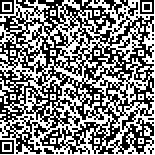下载中心
优秀审稿专家
优秀论文
相关链接
摘要

开展适用于城市地区热红外遥感图像几何效应的辐射校正物理模型研究,对提升城区下垫面温度反演精度具有重要作用。本文利用天空视域系数SVF(Sky View Factor,V)量化城区下垫面几何特征,并考虑几何特征对地物目标辐射传输的影响机理。将遥感传感器入瞳处的辐射亮度分解为地物目标发射辐射、地物目标反射辐射以及大气上行路径辐射3部分,并分析了各部分辐射在“城区—大气”界面的辐射传输过程,构建适用于城市下垫面的热辐射传输UTRT(Urban Thermal Radiation Transfer)模型,可应用于城区热红外遥感图像的几何效应辐射校正。基于Landsat 8 TIRS(Thermal Infrared Sensor)数据,将UTRT模型应用于北京市典型城区地表温度的反演,并对UTRT模型和不考虑下垫面几何特征反演结果进行对比分析,结果显示:(1)研究区内UTRT模型反演结果数值上整体低于不考虑下垫面几何特征的反演结果,差值范围为0—1.57 K,均值为0.44 K;(2)通过对不同地表覆被类型的分析对比,模型结果差值较大的区域为建筑和裸地,其空间分布明显受V值的影响,在一定范围内,V值越大反演结果数值越低;(3)对UTRT模型天空视域系数和环境温度两个参数进行敏感性分析,在地表发射率较小的场景中V参数敏感性较强,由于环境温度与目标地物温度较为接近,其参数的敏感性较低。结论为:UTRT模型可为城市下垫面遥感图像几何效应的辐射校正提供解决方案,对比不考虑下垫面几何特征的模型,前者可以更好地应用于城区地表温度遥感反演。该研究对推进城市高分辨率热红外定量遥感具有发展潜力和应用前景。
The study of radiometric correction physical model for geometric effects applicable to thermal infrared remote sensing images in urban areas plays an important role in improving the inversion accuracy of underlying surface temperature. In this study, the sky view factor (V) was used to quantify the geometric feature of urban underlying surface, considering the influence mechanism of the geometric effect on radiation transfer of the urban ground target. The radiance observed by the sensor was decomposed into three parts: radiance emitted by ground target, radiance reflected by ground target and upward radiance of the atmosphere, and the radiation transfer process of each part at the “urban -atmosphere” interface was analyzed. Then we constructed the Urban Thermal Radiation Transfer (UTRT) model for the urban underlying surface, which can be applied to the geometric effect radiation correction of thermal infrared remote sensing images in urban areas. Based on Landsat 8 TIRS(Thermal Infrared Sensor) data, the UTRT model was used to inverse surface temperature in a typical urban area of ??Beijing and compared inversion results to the model without considering geometric feature of the underlying surface. The results demonstrate that: (1)The inversion result of the UTRT model is generally lower than that without considering geometric feature of the underlying surface with the difference range 0—1.57 K and average value 0.44 K. (2) Through the analysis and comparison of different land cover types, the results show that buildings and bare land types have a more significant difference, and their spatial distribution is obviously affected by the V value. The V value is proportional to the inversion result within a specific range. (3) Sensitivity analysis of the sky view factor and ambient temperature parameters were conducted for the UTRT model. The sensitivity of the V parameter is stronger in scenes with small surface emissivity, while the sensitivity is lower due to the ambient temperature being closer to the target feature temperature. The study shows that the UTRT model can provide a solution for the radiation correction of the geometric effects of the remote sensing image in urban underlying surface. Compared with the model that does not consider the geometric feature of the underlying surface, the former can be better applied to the remote sensing inversion of urban surface temperature. This study has development potential and application prospects for advancing the quantitative remote sensing research of urban high-resolution thermal infrared.

